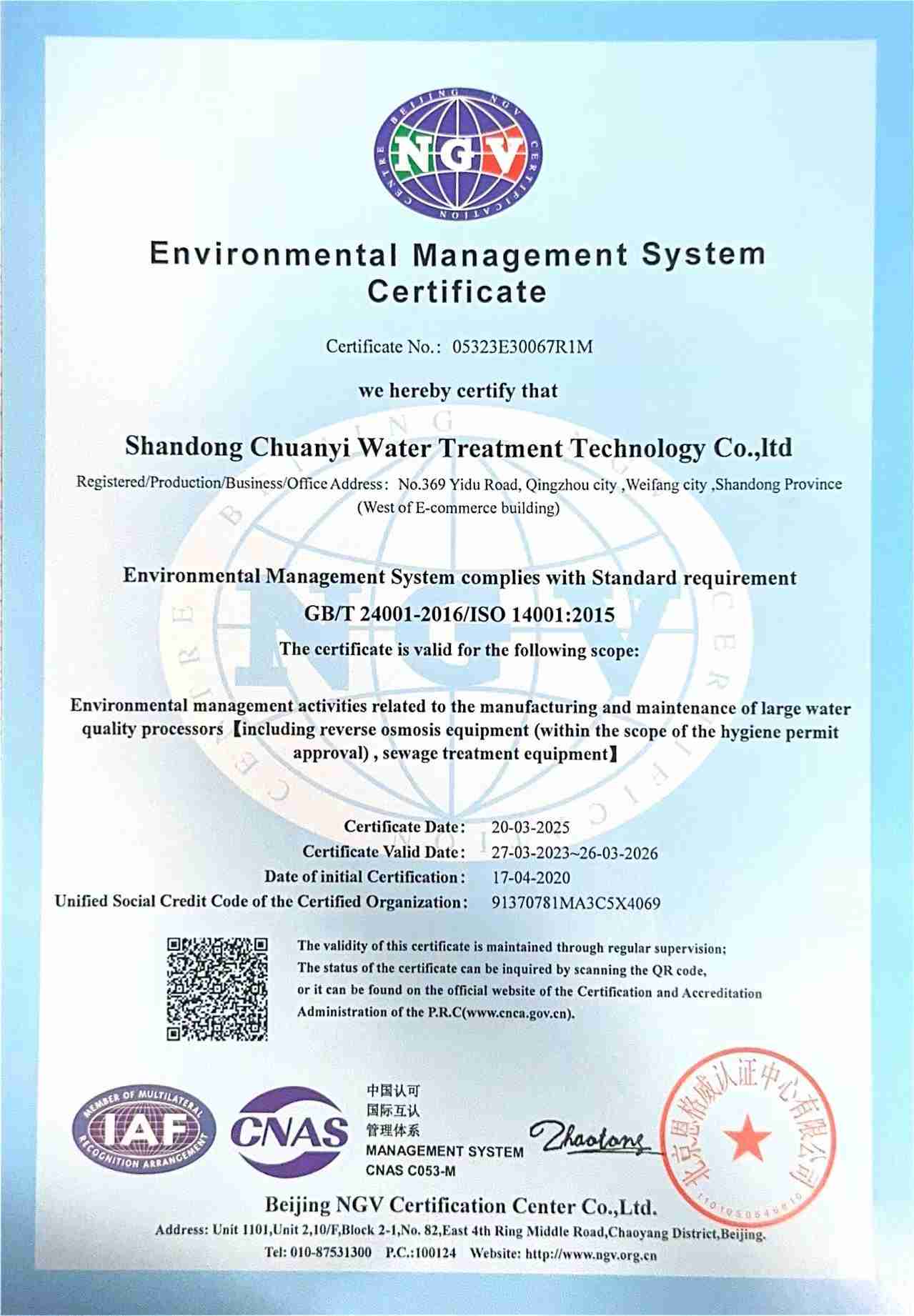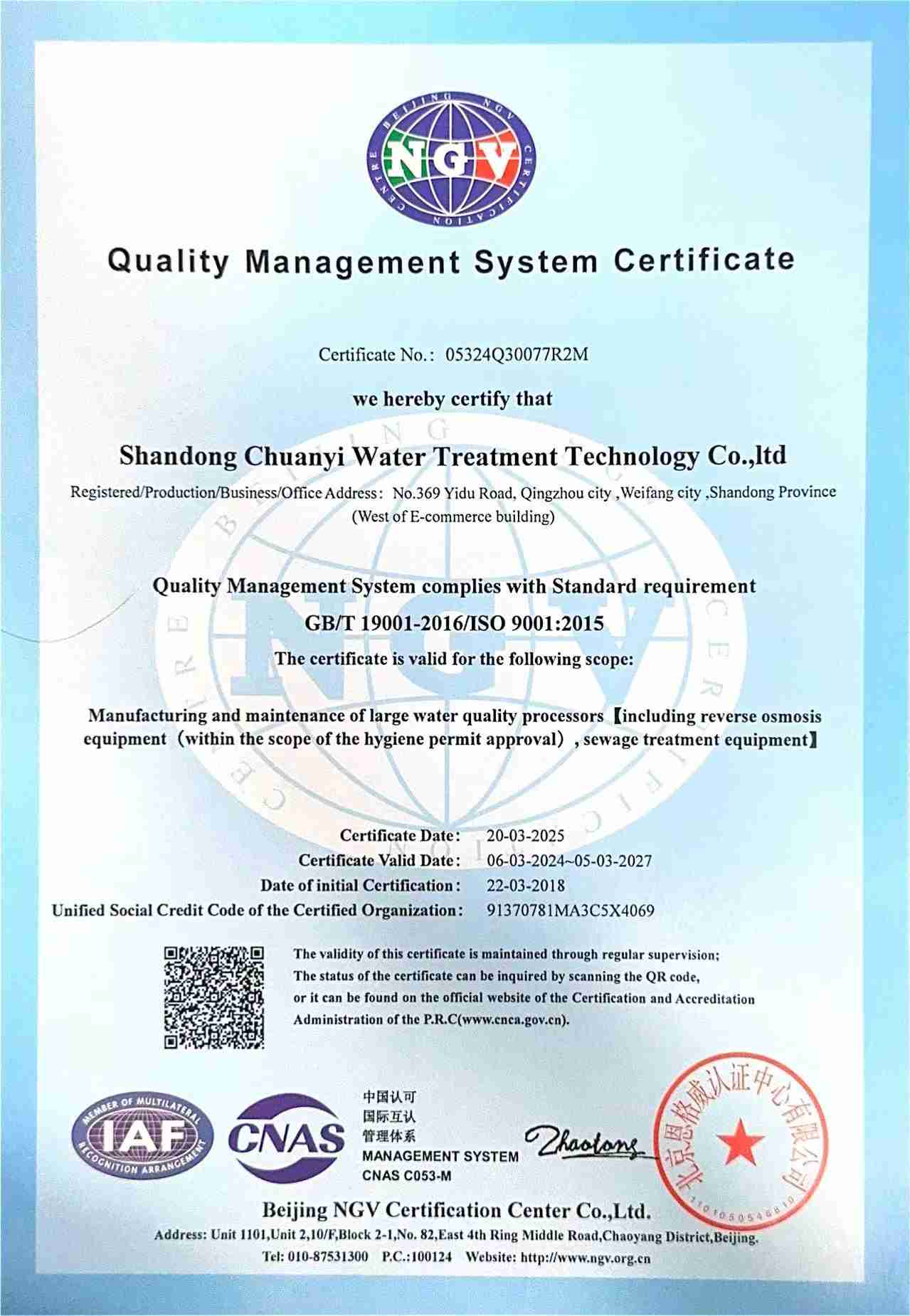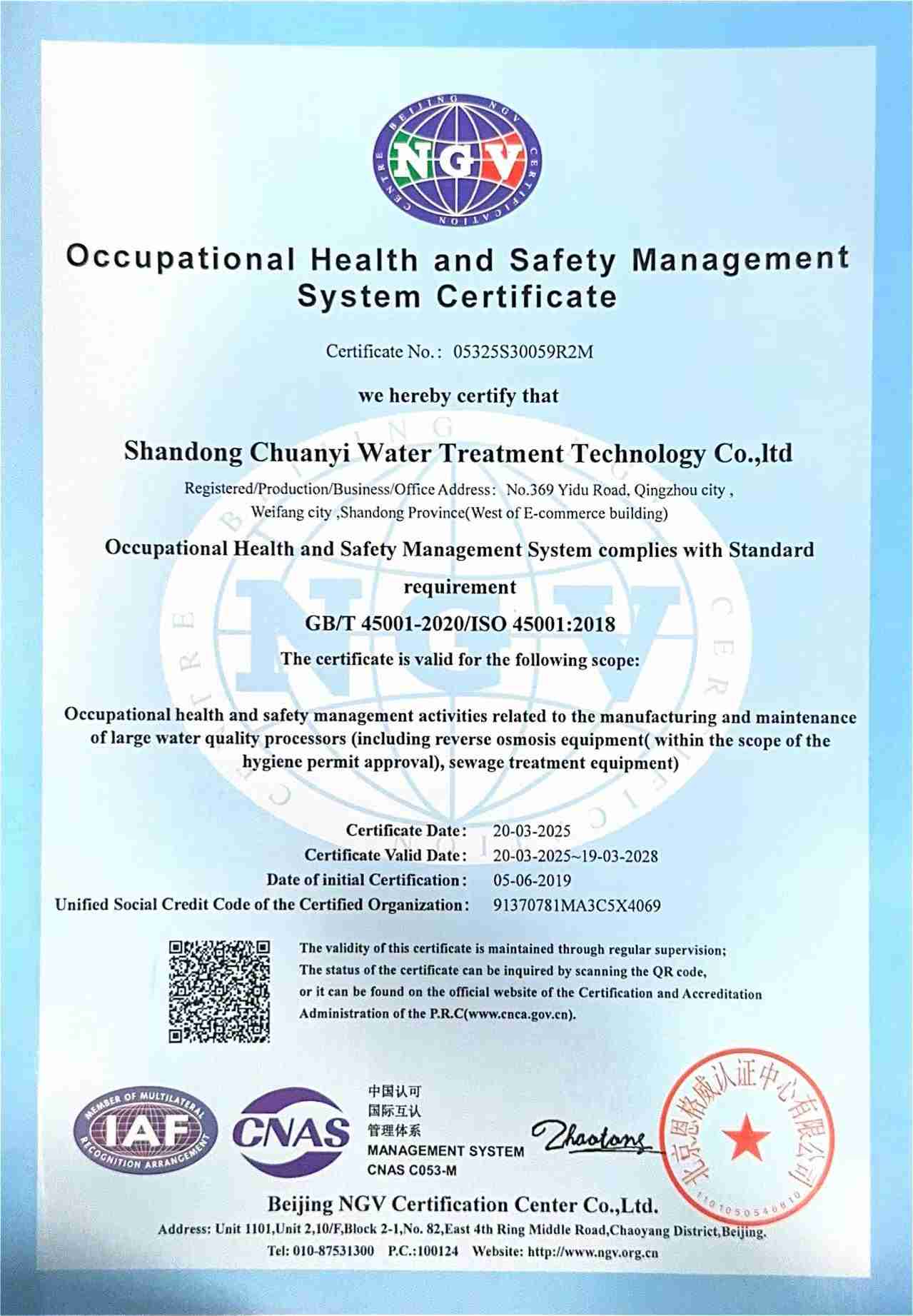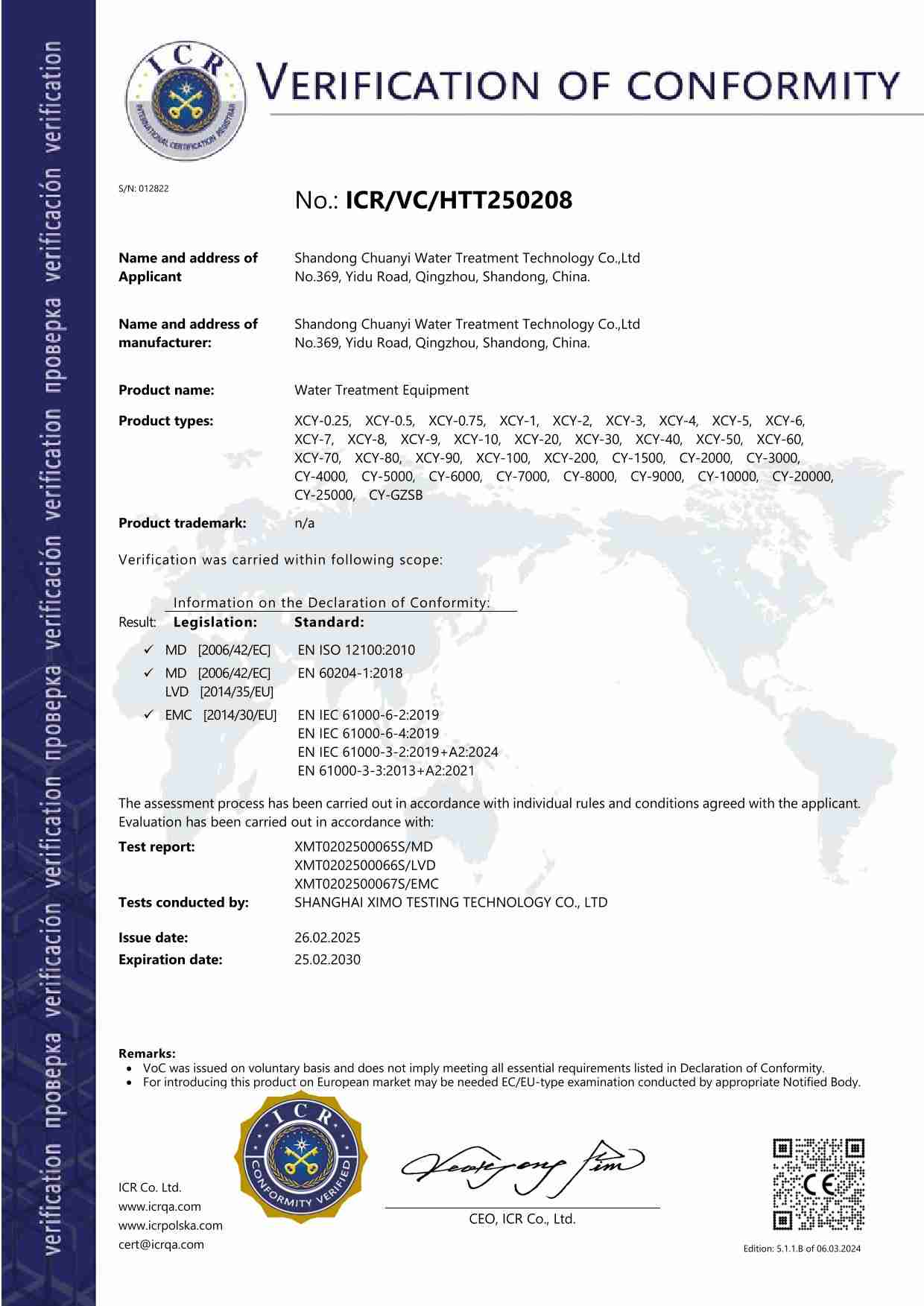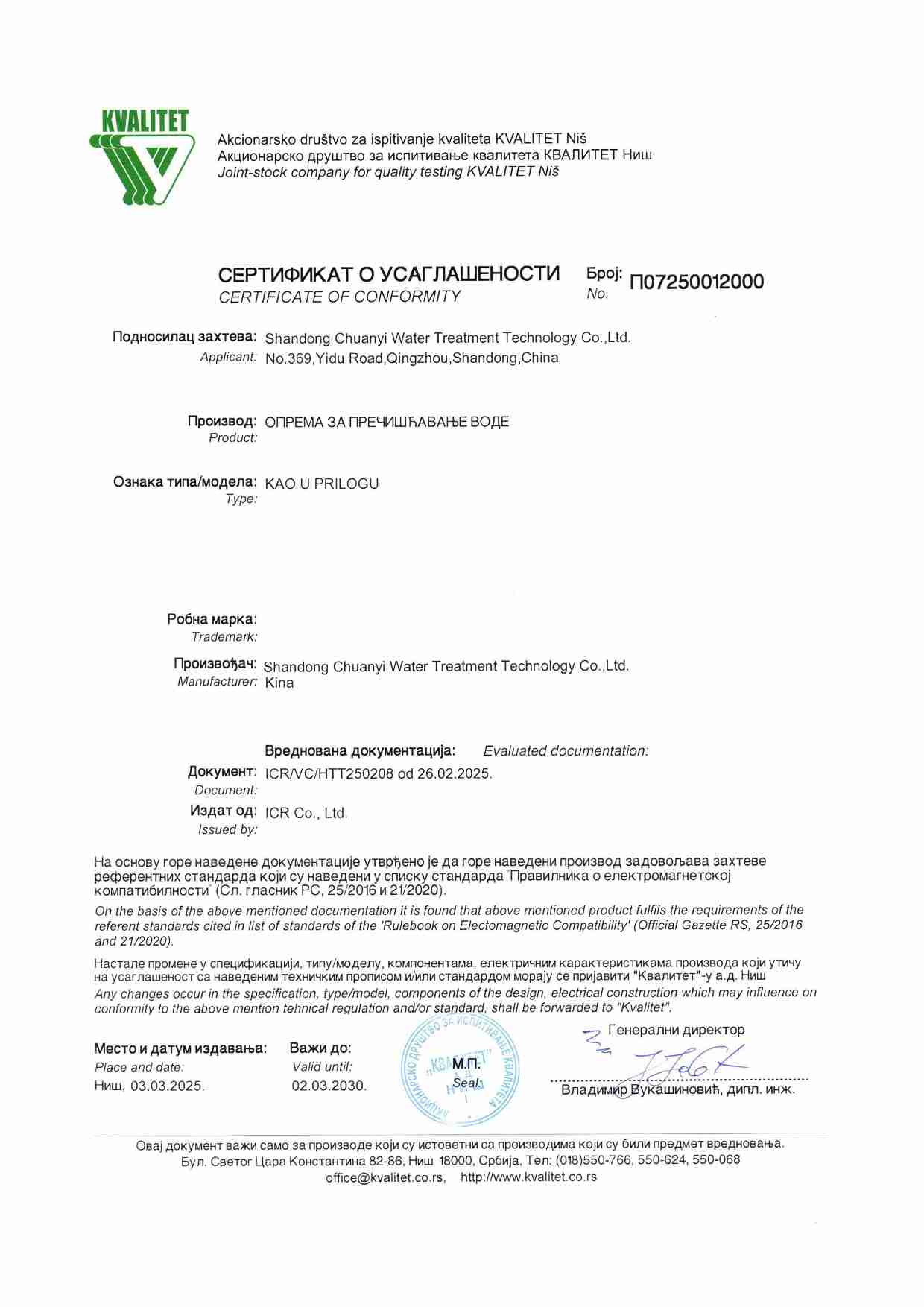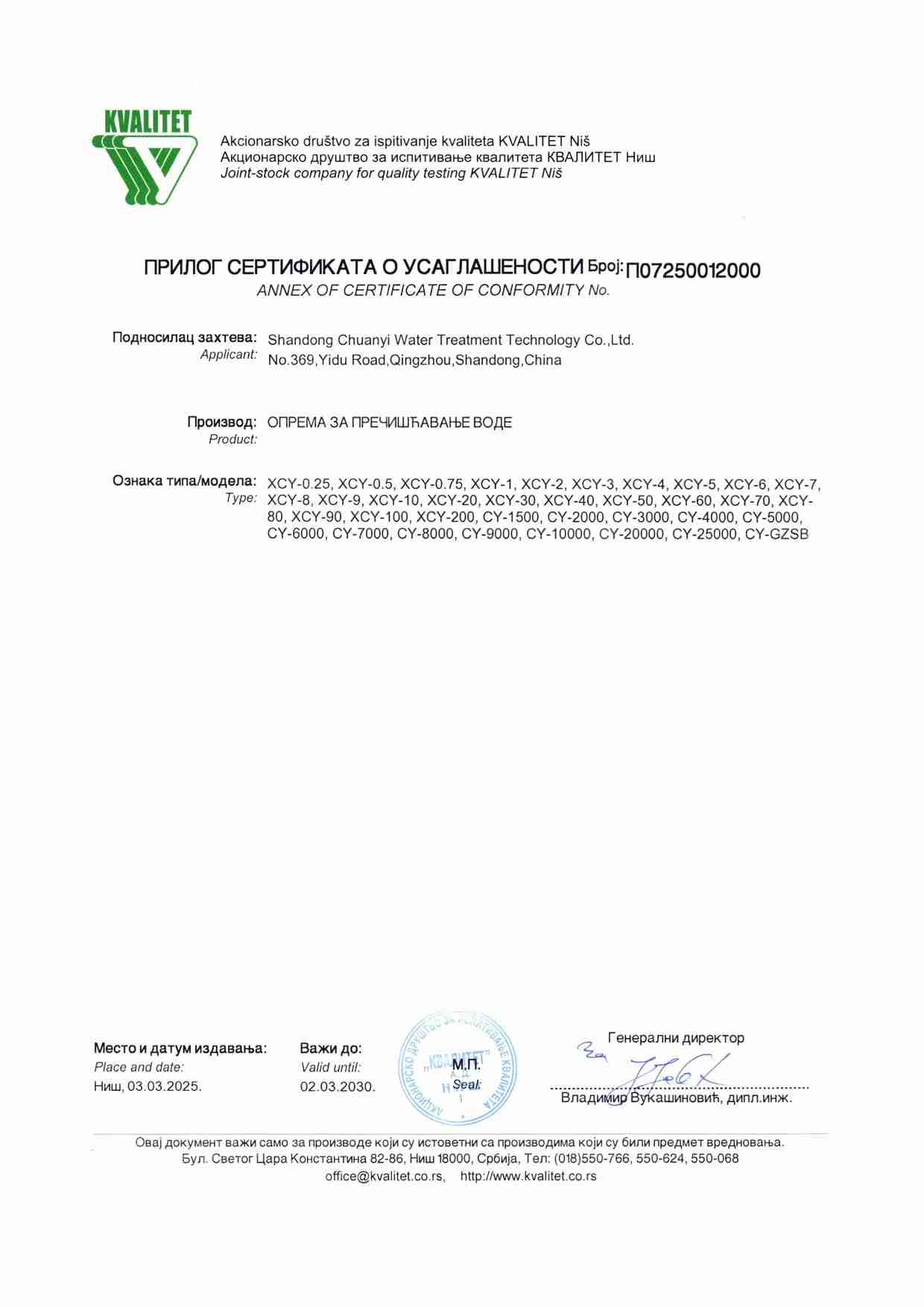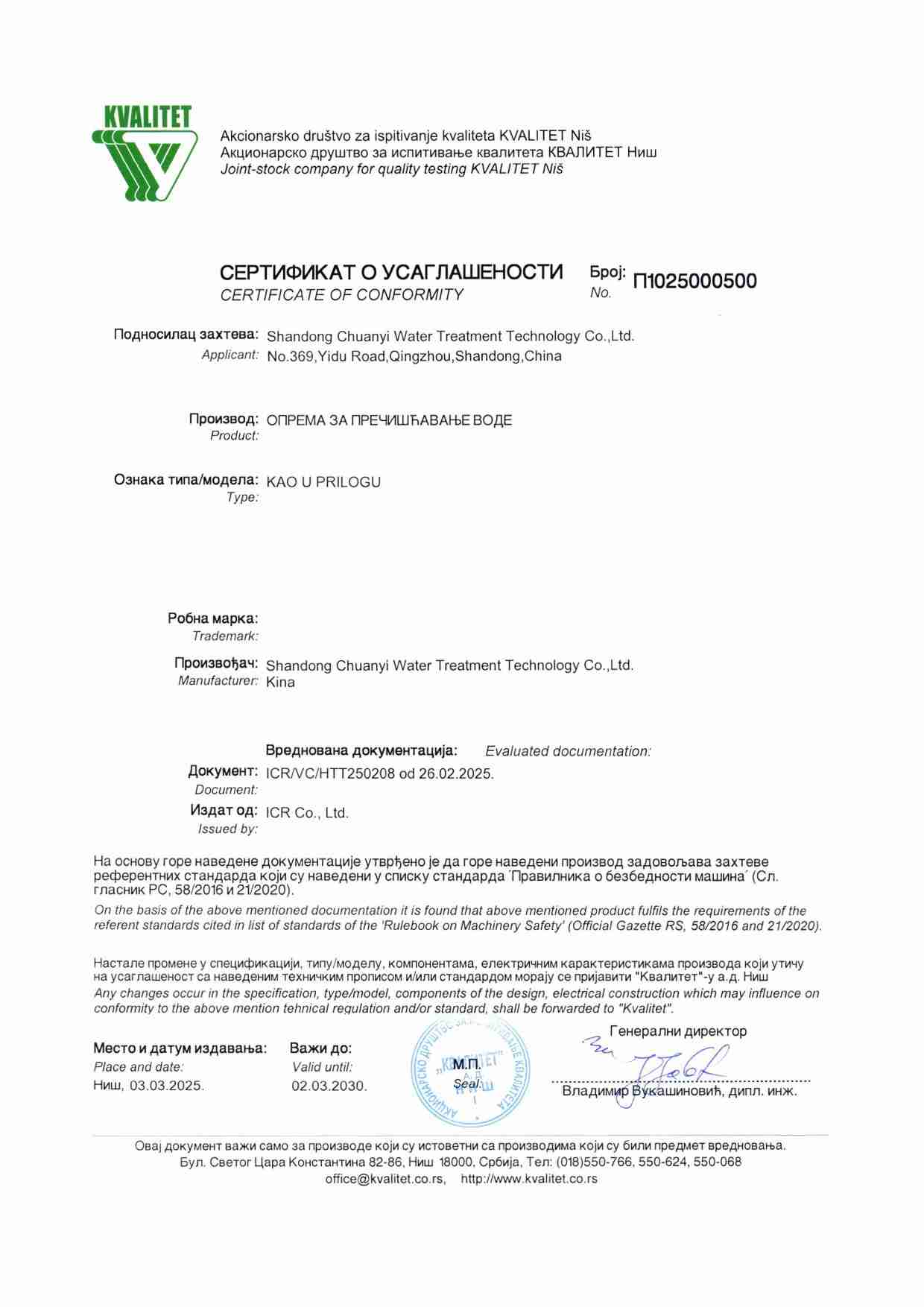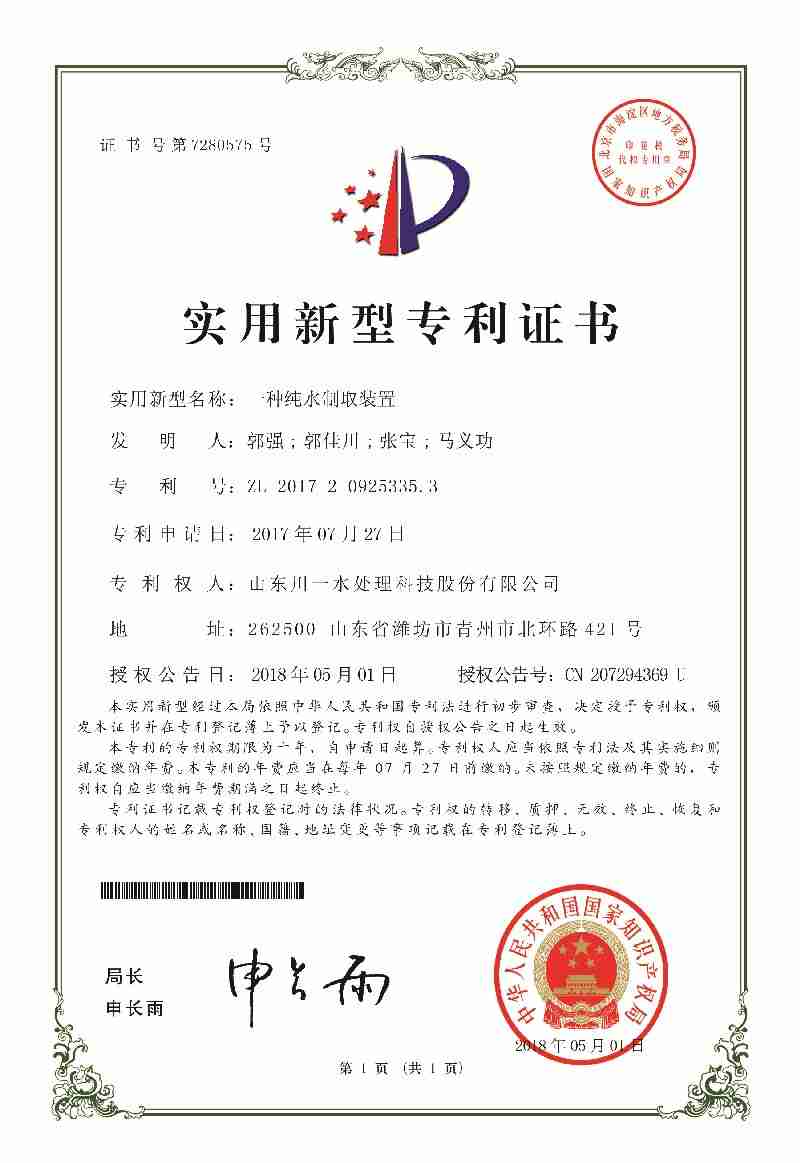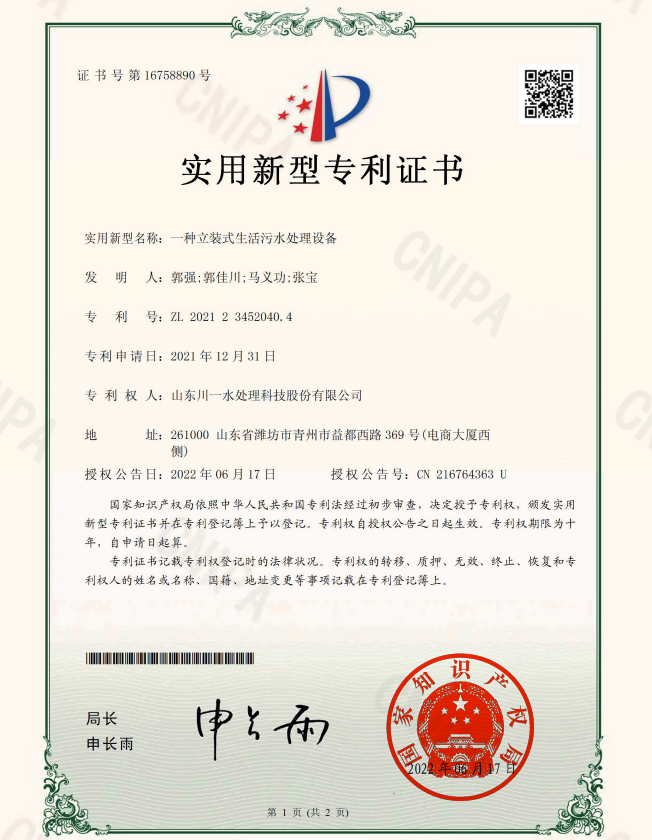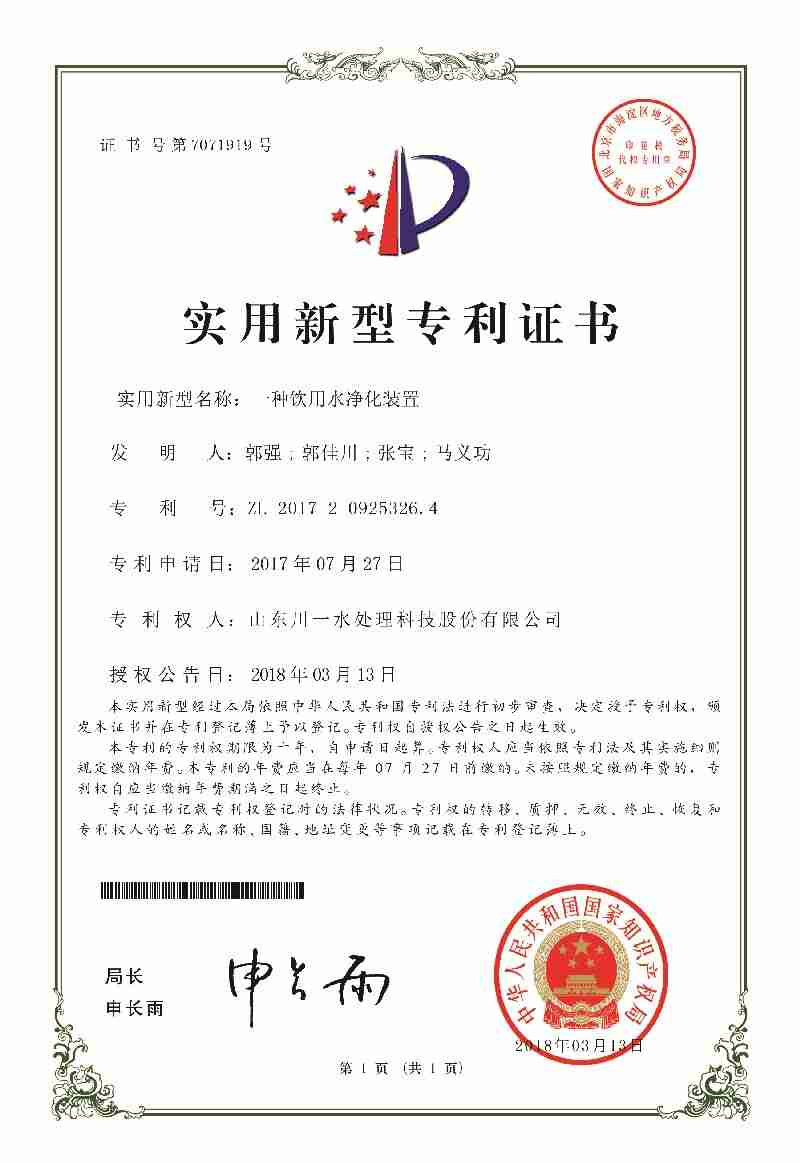Sewage Water Treatment Equipment
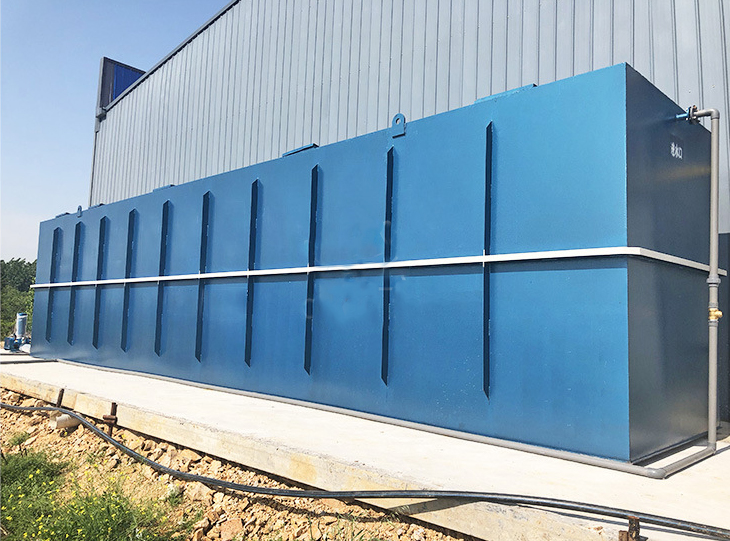
Industry sewage
Chemical wastewater refers to the wastewater produced during the production of products in chemical plants, such as oily wastewater from the production of ethylene, polyethylene, rubber, polyester, methanol, ethylene glycol, oil tank areas, air separation and compression stations, etc. After biochemical treatment, it can generally meet the national second level discharge standards.
Due to the fact that impurities in water are mainly suspended particles and fine fibers, mechanical filtration principle is used to remove impurities through micro porous filtration technology. The working condition of the filter equipment is controlled by PLC or time relay to achieve automatic backwashing and operation, and the water pump is raised to provide the required water head for the filter. The effluent is directly introduced into the production system.
Micro electrolysis technology is an ideal process for treating high concentration organic wastewater. This process is used for the treatment of high salt, difficult to degrade, and high color wastewater, which not only significantly reduces COD and color, but also greatly improves the biodegradability of the wastewater. It has the advantages of wide applicability, good treatment effect, low cost, short treatment time, convenient operation and maintenance, and low power consumption, and can be widely used in the deep treatment of industrial wastewater.
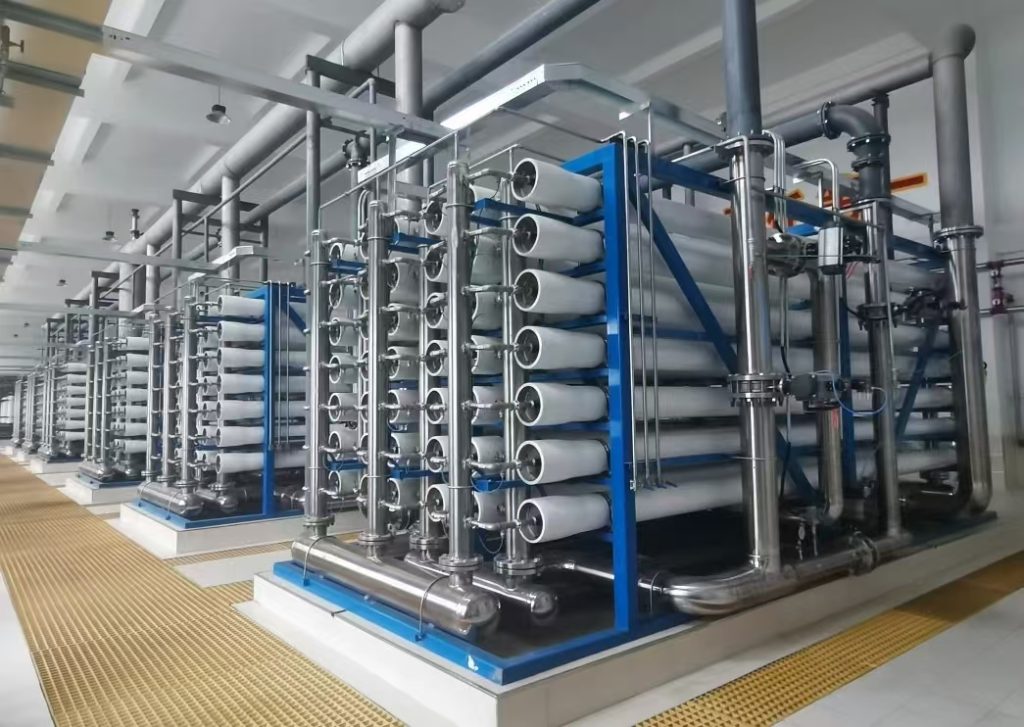
Desalination equipment for seawater, sub seawater, and brackish water
Seawater, brackish water, and brackish water cannot be directly used due to their high salt content. There are two main methods for desalination of seawater, namely distillation and reverse osmosis.
The system composition of the reverse osmosis seawater desalination device mainly includes: raw water system, pretreatment system, seawater desalination system, energy recovery system, chemical cleaning system, chemical dosing system, and device power supply and distribution and self-control system.
Product character:
◆ The product technology and quality are scientifically reliable, and the power consumption per ton of water can be reduced to 3-4 degrees, with high cost-effectiveness.
◆ Effectively remove harmful components such as inorganic salts, heavy metal ions, organic matter, harmful substances, and viruses from water.
◆ Suitable for desalination of seawater with a salt content of ≤ 38000mg/L, with a desalination rate of ≥ 98%, the produced water can meet the National Drinking Water Quality Standards.
◆ The pipeline is made of 316 stainless steel or duplex stainless steel, as well as dedicated high-pressure hoses.
◆ Energy recovery devices can be added to achieve energy conservation and consumption reduction.
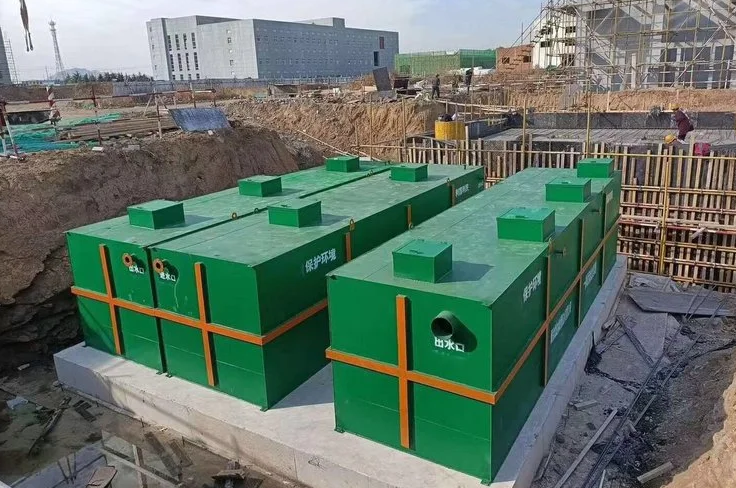
Domestic sewage treatment
Domestic sewage is the wastewater discharged from residents’ daily lives, mainly from residential and public buildings such as residences, government offices, schools, hospitals, shops, public places, and industrial enterprise bathrooms.
The main treatment method is to use biochemical treatment technology and contact oxidation method. The main components of the design of the integrated domestic sewage treatment equipment are:
1. Hydrolysis acidification tank: This process mainly deals with the pre-treatment of wastewater before treatment, and carries out anaerobic fermentation of the wastewater in the water, which is a very important step.
2. Contact oxidation tank: It mainly uses the effluent from the hydrolysis acidification tank to flow automatically to the contact oxidation tank for biochemical treatment. Most of the organic matter in the original wastewater is degraded and purified here.
3. Impurity sedimentation tank: Entering the sedimentation tank is based on the principle of gravity to further precipitate and remove detached biofilms and some organic and inorganic small particles.
4. Disinfection treatment: Chlorine dioxide disinfection device is used, and the disinfection pool and device can continuously change the dosage according to the water output.
5. Aerobic digestion tank for sludge: The remaining sludge discharged from the sedimentation tank is subjected to aerobic digestion and stabilization treatment in the tank to reduce the volume of sludge and improve its stability.
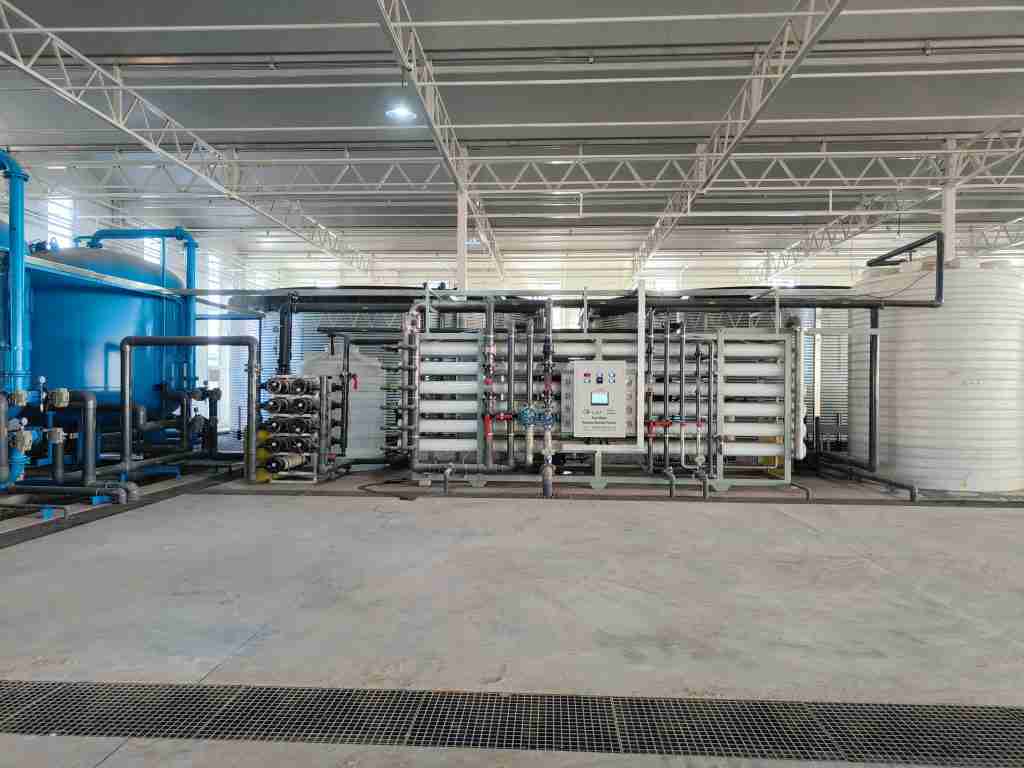
Intermediate water reuse
Reclaimed water refers to water that is recycled and reused. It is used as non potable water after simple technical treatment of high-quality domestic sewage. Reclaimed water is mainly used for car washing, spraying green spaces, flushing toilets, cooling water, etc. This fully utilizes water resources and reduces the pollution caused by direct discharge of sewage to the environment. For cities with scarce freshwater resources and severe water supply shortages, the reclaimed water system is an important way to alleviate water scarcity, prevent water pollution, and protect the environment.
The water purification process of the reclaimed water system is also very simple, usually consisting of three stages. In the first stage, it mainly relies on a grille to separate larger impurities in the water from the water. Due to the fluctuating water usage in daily life, it is necessary to prepare a dedicated reservoir to regulate the water volume. More than 90% of pollutants in water are removed through secondary treatment. There are mainly biological treatment methods, physical and chemical methods, and membrane methods. All processing methods do not require dedicated manpower or material resources.
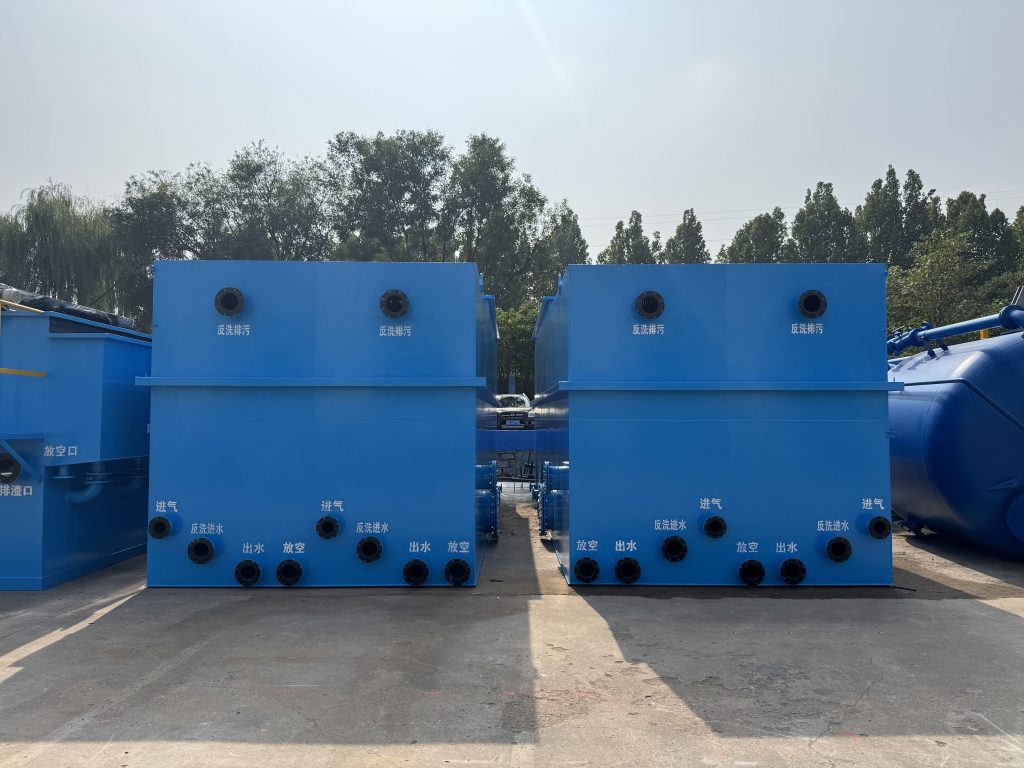
All-in-one water purification equipment
1. Raw water intake: Receive raw water through pipelines or tanks.
2. Pretreatment: Remove large particles, suspended solids, and organic matter through one or more pretreatment units. These pretreatment units may include mixers, reaction tanks, and inclined-tube sedimentation tanks.
3. Primary treatment: After pretreatment, the water enters the primary treatment stage. This stage usually includes filtration and disinfection.
4. Post-treatment: After primary treatment, the water undergoes post-treatment to improve water quality. This may involve removing disinfectants, adjusting the pH value, and eliminating ammonia nitrogen and total nitrogen.
5. Discharge/recycling: After post-treatment, when the water meets the water quality standards, it can be discharged into the external environment or recycled.
Unlock the Power of Clean Water
From custom-designed treatment systems to integrated ancillary equipment, we have the expertise to provide turnkey solutions for your municipal or industrial application. Contact us today to get started.

